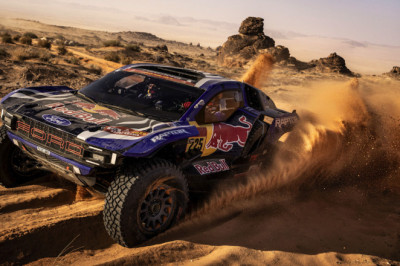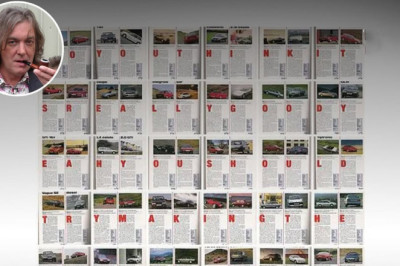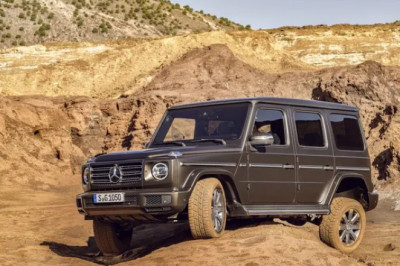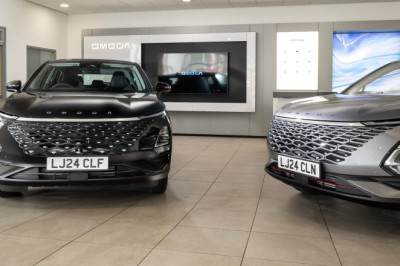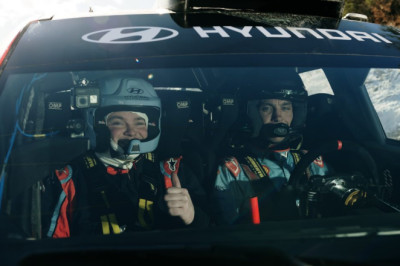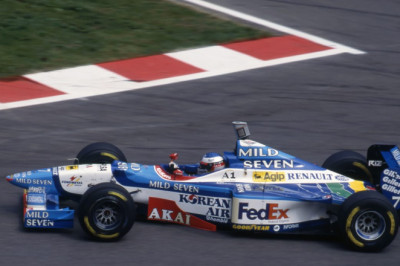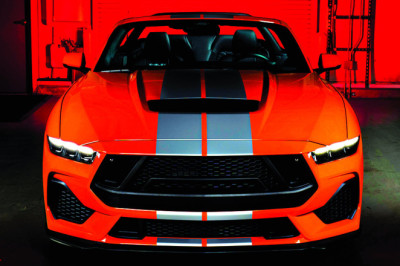
1903 DARRACQ 24HP MODEL JJ REAR-ENTRANCE TONNEAU
One of only two known made by the pioneering French make, Darracq.
Estimate (£): 550,000 - 650,000.
*Pioneering French make
*One of only two known
*Restored in the mid-1990s
*Offered with 1903 Paris-Madrid memorabilia
*VCC Dating Certificate No. 1654
Born in Bordeaux in 1855, Alexandre Darracq made a fortune in the bicycle industry's boom years of the late 19th Century and like many of his contemporaries subsequently turned his attention to powered transport. Darracq's new venture was financed by the sale of his Gladiator bicycle business to Dunlop, though he continued to make bicycle components in his new factory at Suresnes, Seine.
After two false starts that saw him abandon electric carriage manufacture and then attempt unsuccessfully to sell the built-under-licence Léon Bollée voiturette, Darracq launched his first successful internal combustion-engined automobile in 1900. Darracq was a businessman rather then an engineer and had recruited designer Paul Ribeyrolles to be responsible for its production.
That first 6½hp single-cylinder voiturette was followed by a range of twins and fours, and to publicise his products Darracq set about establishing a reputation for sporting prowess, commencing in 1901. In December 1905 a 22-litre V8-engined monster designed by Ribeyrolles and driven by Victor Hemery set a new World Land Speed Record of 109.65mph, and that same year Darracq won the both the Circuit des Ardennes and Vanderbilt Cup races, repeating the latter victory in 1906.
Early in 1903 a consortium of British investors had bought the company, though Darracq remained as managing director. In 1905 its UK operations were incorporated as A Darracq & Co, with offices in London's Oxford Street, and in 1906 the firm opened an assembly plant at Kennington, South London. Before then the UK's sole importer had traded under the 'Automobilia' name. Advertising the new 1903 12hp twin-cylinder Darracq, Automoblia described the car as 'perfectly silent and smooth running' before inviting prospective customers to 'call and inspect before purchasing elsewhere.' Noteworthy features listed included an engine cast in one piece and driving direct to the back axle on top speed; ignition apparatus under front of bonnet; governor on the induction; and a timber frame.
This 1903, 24hp Darracq - one of only two known - was delivered new to Mr Albert Arvengas (born 10.02.1858) of Paris in 1903 or late 1902. In May 1903, Mr Arvengas took the car as a 'Touriste', accompanying the infamous Paris-Madrid 'race to death'. Although the race was halted at Bordeaux because there had been so many fatal accidents, including the death of Marcel Renault, the postcards confirm that, among others, Arvengas went on to Madrid in his Darracq.
Until its recent acquisition by the vendor, the Arvengas family retained the oval wooden plaque, white with blue border and lettering, confirming this car as number '41' of 'Les Touristes'. The vendor also obtained from the family various entrants' instructions, such as where to find the naphtha gasoline collection points; the three-page folding route card; Arvengas's driving licence; and an album of illustrated postcards sent daily by Albert Arvengas from each town he passed through or at which he stayed.
Other Paris-Madrid memorabilia and original fittings include the original Megevet Genève radiator cap; two leather helmets, two pairs of goggles, and two collapsible water buckets taken on the race; fitted Darracq basket-type side panniers with brass fittings; tyre pump and jack taken on the race; a 1903 bound copy of 'Le Chauffeur' with entry from Monsieur Arvengas; and a large bound volume of 'Dépêche 1903' detailing the progress of the race. A modern overall breathable cover comes with the car also.
The Darracq was first re-commissioned by a French enthusiast, who purchased it from the Arvengas family in the 1970s. After various owners and rallies, it was decided that the car was worthy of a full restoration, which was finished in time for the 1995 London to Brighton Run. Work included all new gears and bearings; full engine rebuild; radiator re-core; replacement of various bearings, pins, linkages etc; body repair; rebuild of wheels (875x105); and a full repaint - in fact, any work considered necessary, all professionally carried out. We are advised that bills relating to the restoration are available from a separate source.
The engine is a four-cylinder of 112mm bore and 120mm stroke, giving a capacity of 4,729cc, and there is the normal Darracq three-forward-speeds-plus-reverse gearbox. Top gear gives something approaching 50mph, while a fair average speed is 30mph. It simply romps up hills.
The radiator, although made by the usual Darracq suppliers, is not that originally fitted to this car. Literature of 1903 says that the cooling system was inadequate and evidently that is why the radiator was changed very early on in the car's life, believed 1906. The present bonnet must have been professionally made at the same time, as it uses very early fittings and includes the usual Darracq lift-up vent together with side panels with vented opening doors. The original bonnet, proving the original radiator's shape, was acquired from the Arvengas family. This carries the original paintwork, and the condition suggests it was used for a very short period only.
Evidently, the water-pressurised lubricator was not always trustworthy, and while water connections still exist, the lubricator has been altered so that it is pressurised by the exhaust. Made of soft alloy, the corroded original carburettor was beyond repair; a Zenith is now fitted. The car still carries its original rear-entrance tonneau body with five seats (one on the door) and fittings for a Surrey top and windscreen.
The Darracq is not very large, but with its engine size, its performance, and its confirmed provenance, is an important car and certainly one of the most imposing on the London to Brighton Veteran Car Run.







